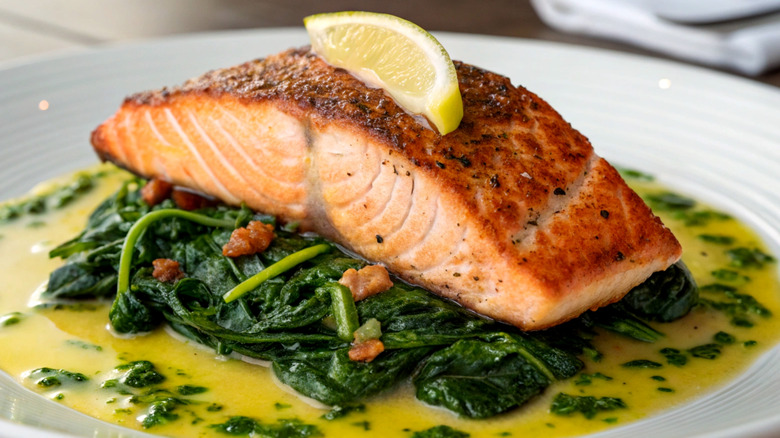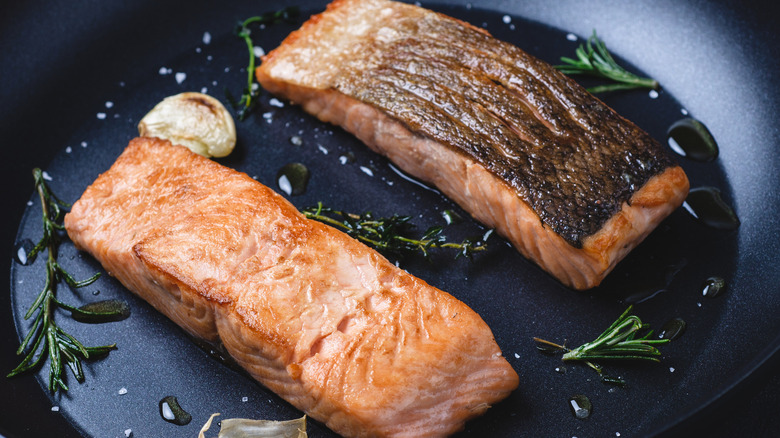Why You Might Want To Leave The Skin On Salmon While Cooking It
Crispy, golden salmon skin does more than add texture — it protects the fish from overcooking. "Yes, leaving the skin on can help protect the delicate flesh from overcooking, especially when pan-searing or grilling," says Maricel Gentile, chef and owner of Maricel's Kitchen and author of "Maricel's Simply Asian Cookbook." She adds, "The skin acts like a thin barrier, holding in moisture and creating a crisp, flavorful layer if seared well." Anyone who has pulled a dry fillet out of the oven knows how valuable that protection can be.
Gentile points to pan-searing and grilling salmon with its skin as the best uses for skin-on salmon, where high heat transforms the fat under the skin into a crackling layer. She recommends patting the skin completely dry, scoring it lightly so it doesn't curl, and seasoning it simply with salt before hitting a very hot pan. The technique works the same way home cooks chase crispy chicken skin, where moisture is the enemy, and heat is your friend. For recipes that lean lighter, like steamed fish or delicate broths, Gentile suggests removing the skin so the flavors stay clean. It's the same logic behind knowing when to trim fat from steak before grilling, or when to let it ride — a balance any cook learns with practice. Just like figuring out the right seasoning for roasted vegetables or knowing when to pull a burger off the grill, learning the key to cooking the crispiest salmon skin might make the difference between a weeknight dinner you tolerate and one you crave.
When salmon skin shines — and when it doesn't
Knowing when to keep salmon skin on — and when to ditch it — can transform how you cook. Maricel Gentile explains that some dishes require removing the skin entirely, noting, "For sushi, ceviche, or any raw preparation, the skin should be removed for texture and presentation. Also, in delicate soups or steamed dishes, removing the skin keeps the broth clear." That means salmon skin truly shines when it has a chance to crisp, not when it lingers in liquid.
But when the pan or grill comes into play, that skin earns its keep. "In Asian cooking, I sometimes crisp the skin separately for toppings," Gentile explains. If you've ever experimented with crispy fish tacos, you know how much the crackle of well-rendered skin can elevate every bite. It's the same principle as saving rendered chicken fat for roasting potatoes or slipping pork cracklings into a stew.
For home cooks just beginning to branch into seafood, Gentile's advice makes salmon less intimidating. With the right technique, the skin stops being something you scrape off and toss, and instead, it becomes the part you look forward to tasting. Salmon skin is a bonus edible ingredient that delivers not just crunch and flavor, but also a nutritional edge; packing extra omega-3 fatty acids for your heart, and collagen to support your own healthy skin.

